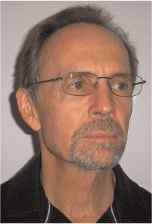A reassessment of the petroleum systems in the offshore northern Perth Basin
Emmanuelle Grosjean A , Chris Boreham A , Andrew Jones A , Diane Jorgensen A and John Kennard AGeoscience Australia.
The APPEA Journal 53(2) 427-427 https://doi.org/10.1071/AJ12038
Published: 2013
Abstract
The discovery of commercial oil in the Cliff Head-1 well in 2001 set an important milestone in the exploration history of the offshore northern Perth Basin. The region had been less explored before then, partly due to the perception that the main source of onshore petroleum accumulations, the Late Permian-Early Triassic Hovea Member, had only marginal potential offshore. The typing of the Cliff Head oil to the Hovea Member provided evidence that the key onshore petroleum system extends offshore and has revitalised exploration with 13 new field wildcat wells drilled since 2002.
A reassessment of the hydrocarbon generative potential in the offshore northern Perth Basin confirms the widespread occurrence of good to excellent oil-prone Hovea Member source rocks in the Beagle Ridge and Abrolhos Sub-basin. The Early Permian Irwin River Sequence and several Jurassic Sequences are also recognised as prime potential source rocks offshore, mostly for their gas-generative potential. The unique hydrocarbon assemblages exhibited by the Hovea Member extracts are shared by the oils recovered from Permian reservoirs in the offshore Cliff Head-3 and Dunsborough-1 wells, indicating the Hovea Member as the primary source charging these accumulations.
Geochemical correlation of oil stains from Hadda-1 and as far north as Livet-1 provides evidence for a working Early Triassic petroleum system across much of the Abrolhos Sub-basin. In this area, the Hovea Member was shown to be both of limited quality and only marginally mature for oil generation, which suggests the occurrence of effective source kitchens in the adjacent Houtman Sub-basin.

Emmanuelle Grosjean joined Geoscience Australia as an organic geochemist in 2005 and has since been involved in numerous studies about the petroleum prospectivity of Australia’s offshore basins. She received a PhD (organic chemistry) from the University Louis Pasteur of Strasbourg, France, in 2002 and subsequently spent three post-doctoral years at MIT working on the Infracambrian petroleum systems of Oman. |

Chris Boreham obtained a PhD (inorganic chemistry) from ANU in 1978 and has worked at Geoscience Australia since 1980. He is an internationally recognised petroleum geochemist with more than three decades of experience in the application of organic geochemistry to the evolution of oil and gas in sedimentary basins. More recently, he has extended these geochemical studies to unconventional petroleum (coal seam methane, shale gas, and oil). He also leads key aspects of the CO2CRC’s studies about the injection of CO2 into a depleted natural gas field and a saline aquifer. |

Andrew Jones completed a BSc (honours) (Earth sciences) (1997) and a PhD (sedimentology) (2003) at UQ. He joined Geoscience Australia in 2001 where he joined a multidisciplinary team studying natural hydrocarbon seepage. He then went on to specialise in regional basin analyses as a senior geologist within the petroleum prospectivity group. In 2012, he led a team assessing the potential impacts of natural hazard risks on developing countries in Asia Pacific. |

Diane Jorgensen completed an honours degree (carbonate sedimentology in the intertidal zone of the Great Barrier Reef) at UQ in 2001. She then moved to Townsville and obtained a PhD from James Cook University on the Quaternary carbonate aeolianites of southwest WA before moving to Canberra to work as a geoscientist at Geoscience Australia. She has worked as a basin analyst on the offshore northern Perth and southern Bonaparte basins. She is now working within the Vlaming CO2 Storage Section, where she focuses on well analysis and sequence stratigraphy of the Vlaming Sub-basin. |

John Kennard obtained a BSc (honours) (geology) from ANU (1974) and a PhD (geology) from Memorial University of Newfoundland, Canada (1989). He has more than 35 years of experience, formerly with Geoscience Australia, in geological mapping, sedimentary basin analysis, petroleum geology, and natural hydrocarbon seepage studies, including sequence stratigraphic and petroleum systems analysis of Australia’s North West Shelf (Bonaparte and Browse Basins) and the offshore Perth, Canning, and Amadeus basins. |
References
Crostella, A., 2001—Geology and Petroleum Potential of the Abrolhos Sub-basin, Western Australia. Report 75. Western Australia: Western Australia Geological Survey.Gorter, J.D., Hearty, D.J., and Bond, A.J. (2004). Jurassic petroleum systems in the Houtman Sub-basin, northwestern offshore Perth Basin, Western Australia: a frontier petroleum province on the doorstep? The APPEA Journal 44, 13–57.
Gradstein, F.M., Ogg, J.G., Schmitz, M.D., and Ogg, G.M., 2012—The Geologic Time Scale 2012: Volumes 1 & 2. Oxford, UK: Elsevier BV.
Jorgensen, D.C., Jones, A.T., Kennard, J.M., Mantle, D., Robertson, D., Nelson, G., Lech, M., Grosjean, E., and Boreham, C.J. (2011). Offshore northern Perth Basin well folio. Geoscience Australia record 2011/09. , .
Kempton, R., Gong, S., Kennard, J., Volk, H., Mills, D., Eadington, P., and Liu, K. (2011). Detection of palaeo-oil columns in the offshore northern Perth Basin: Extension of the effective Permo-Triassic charge system. The APPEA Journal 51, 377–96.
Volk, H., George, S.C., Boreham, C.J., and Kempton, R.H. (2004). Geochemical and compound specific carbon isotopic characterisation of fluid inclusion oils from the offshore Perth Basin (Western Australia): implications for recognising effective oil source rocks. The APPEA Journal 44, 223–39.


